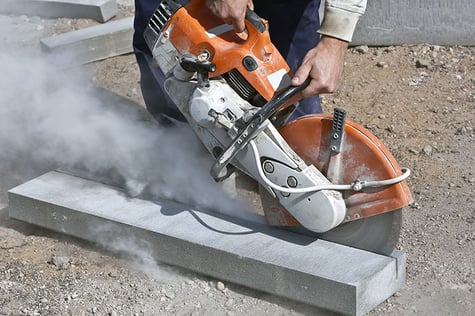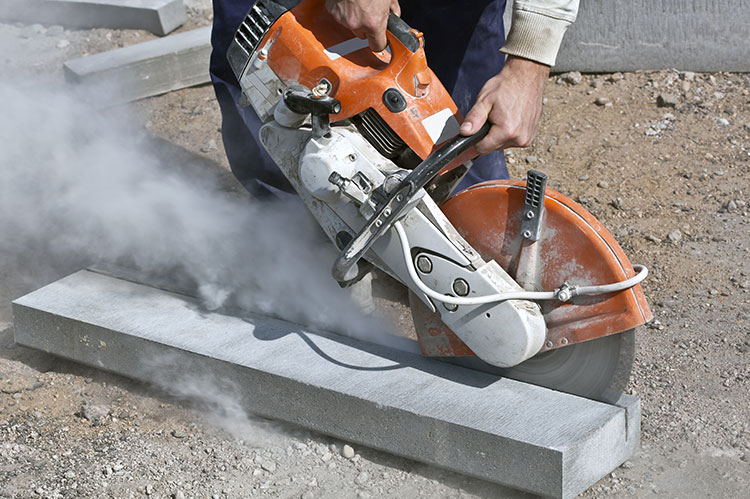 Sometime this spring, OSHA is expected to release new rules regulating workers’ exposure to silica dust. These rules are expected to include two sets of standards, one for general and maritime industries, and one for the construction industry – and they could have a huge impact on your roof safety and standard procedures. Here’s what you need to know:
Sometime this spring, OSHA is expected to release new rules regulating workers’ exposure to silica dust. These rules are expected to include two sets of standards, one for general and maritime industries, and one for the construction industry – and they could have a huge impact on your roof safety and standard procedures. Here’s what you need to know:
What is Silica Dust?
Silica is a common mineral that’s found in everything from stones to bricks and mortar. Crystalline silica – a fine dust consisting of particles 100 times smaller than a grain of sand – is produced during activities like cutting, sawing, crushing, drilling, blasting, and replacing asphalt roofing, some of which are very common in roofing. Because the particles are so tiny – they’re often invisible to the naked eye – they’re easily inhaled and often wind up lodged in the lungs, where they cause fluid buildup and scar tissue. According to OSHA, more than two million workers are exposed to silica dust each year, with more than 640,000 being exposed at levels that exceed current standards.
What are the Risks Associated?
Studies have associated breathing silica dust with lung cancer and silicosis, a lung disease that has killed more than 14,000 U.S. workers since 1968. Each year, approximately 200 workers die from this disease, and hundreds more become disabled – some of them only in their 20’s or 30’s. In addition, inhaled silica can cause other respiratory diseases like tuberculosis, bronchitis, and emphysema, as well as diseases of the kidneys and immune system. Symptoms can appear anywhere from just a few weeks to a number of years after silica exposure. Once you start analyzing the facts, you can quickly realize why silica is so harmful and needs to be a roof safety priority.
What is the Regulatory History?
The Labor Department first expressed concern about silica exposure in the 1930’s. In the 1970’s, labor groups began pushing for tighter regulations, but employers had concerns about the costs of compliance. The debate continued for decades. The current rule change was launched under the Bush administration and became a priority when the Obama administration took office in 2009. The White House received a draft in 2011, where red tape and concerns over the economy kept it tied up for another two years.
In 2013, OSHA published the proposed rule change and began accepting public comments. In 2015, the Department of Labor put the rule on its fall agenda and expects to issue a status update some time in early 2016.
What Will the New Rule Change?
While the final wording is still unknown, the new rule is expected to cap worker exposure to silica dust and to require employers to take measures that limit and reduce exposure. And though these changes won’t be unique to just roof safety, they are critical for almost every construction related industry:
- Restrict silica exposure to 50 micrograms per cubic meter of air (averaged over an eight-hour day), which is half of the current limit. Employers will be required to measure exposure starting at 25 micrograms per cubic meter of air.
- Require employers to use dust controls to protect workers from breathing silica dust and, at higher exposure levels, provide employees with respirator equipment.
- Offer a medical exam (including x-rays and lung function tests) every three years to any employees exposed above the limit for more than 30 days per year.
- Keep records of both exposure and the results of medical exams.
- Train employees on which activities can result in silica exposure and teach them how to limit that exposure.
OSHA expects that, when the rule is fully implemented, the new requirements will have an annual impact of saving 600 lives and preventing 1,500 new cases of silicosis.
It may be too early to take specific action toward compliance, but it’s never too early to start planning. With a ruling expected sometime this spring, now is a great time to start thinking about how the change will affect your roof safety training and protocols and what you’ll need to do to get ready.





